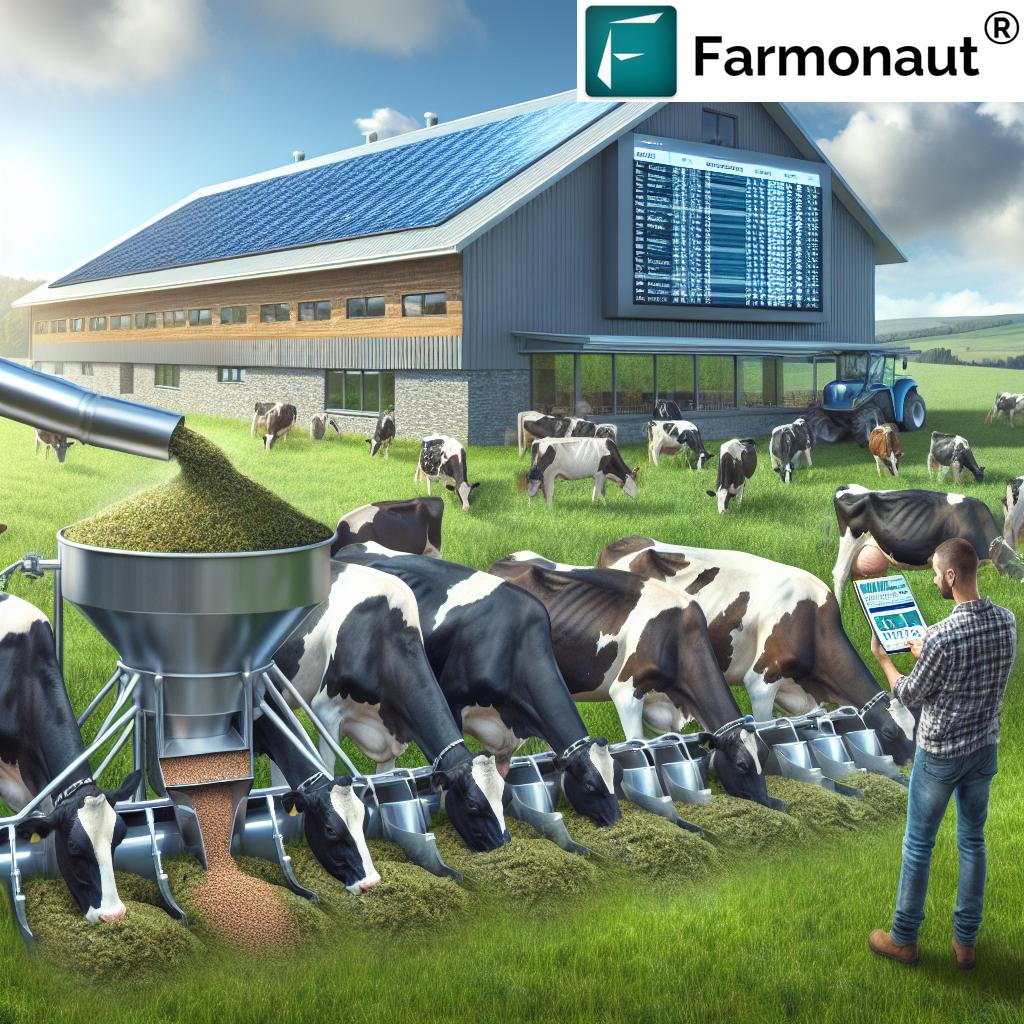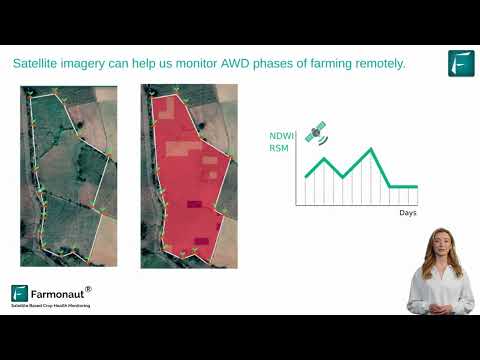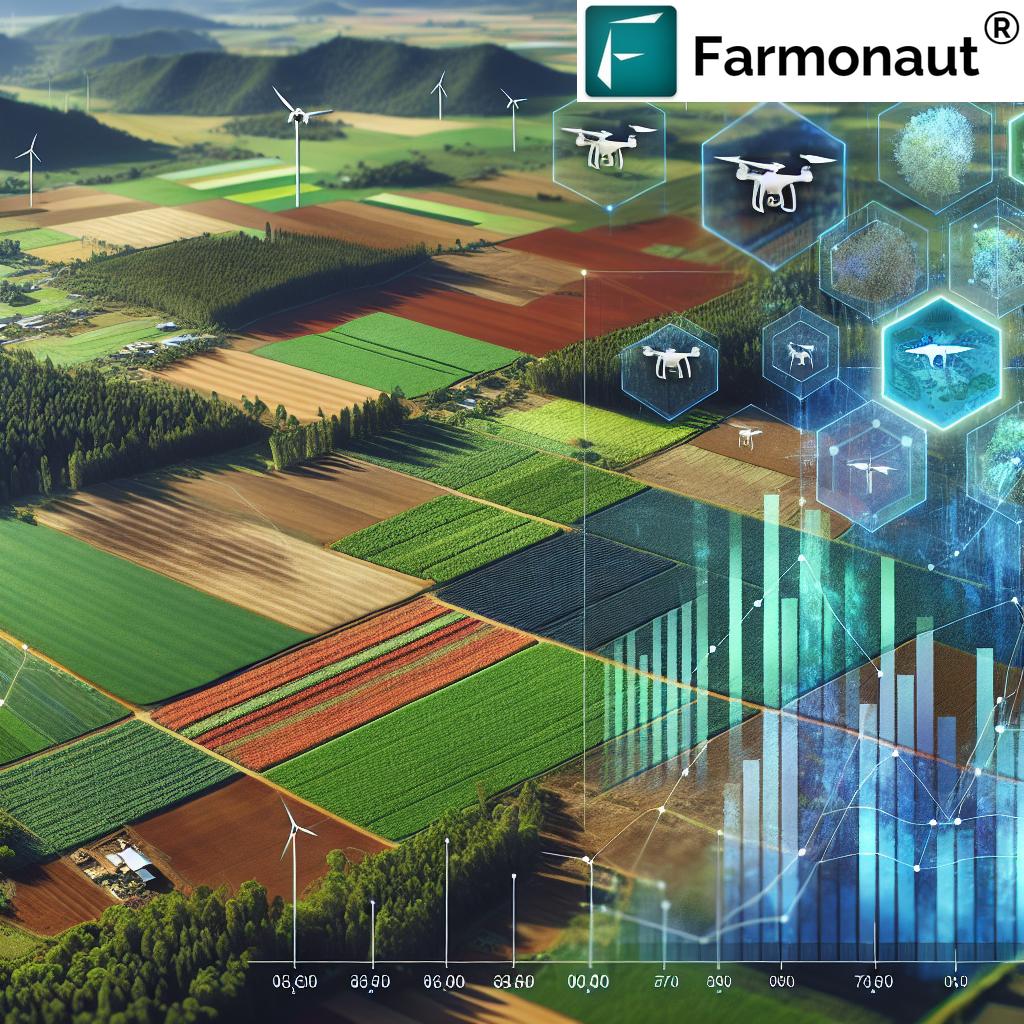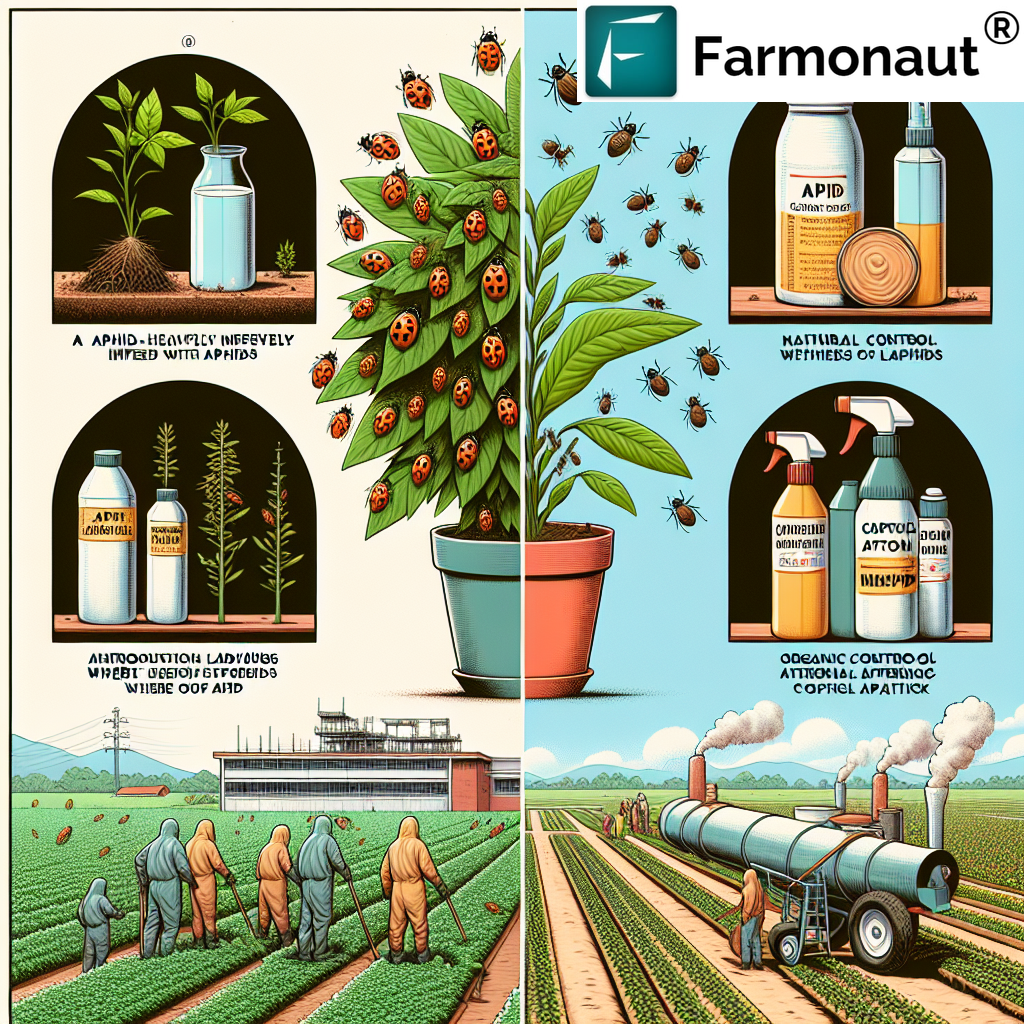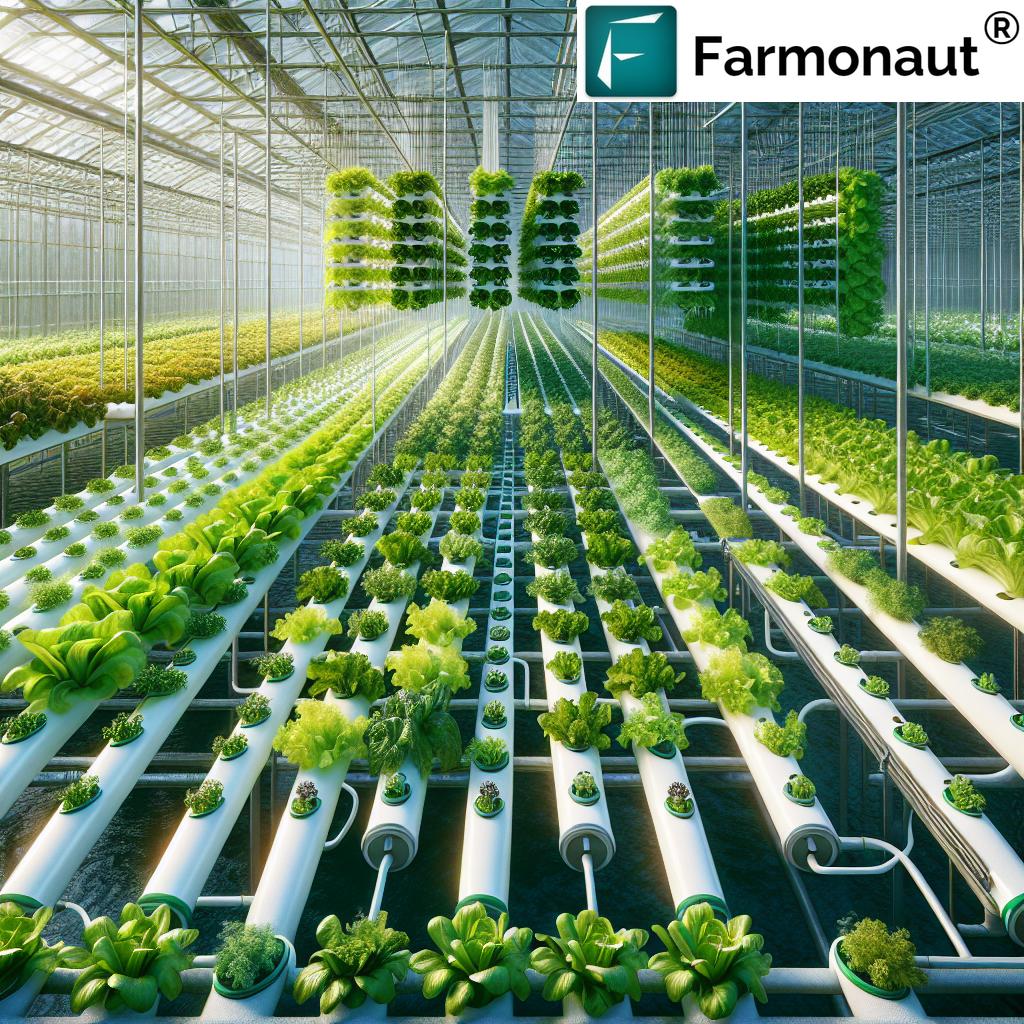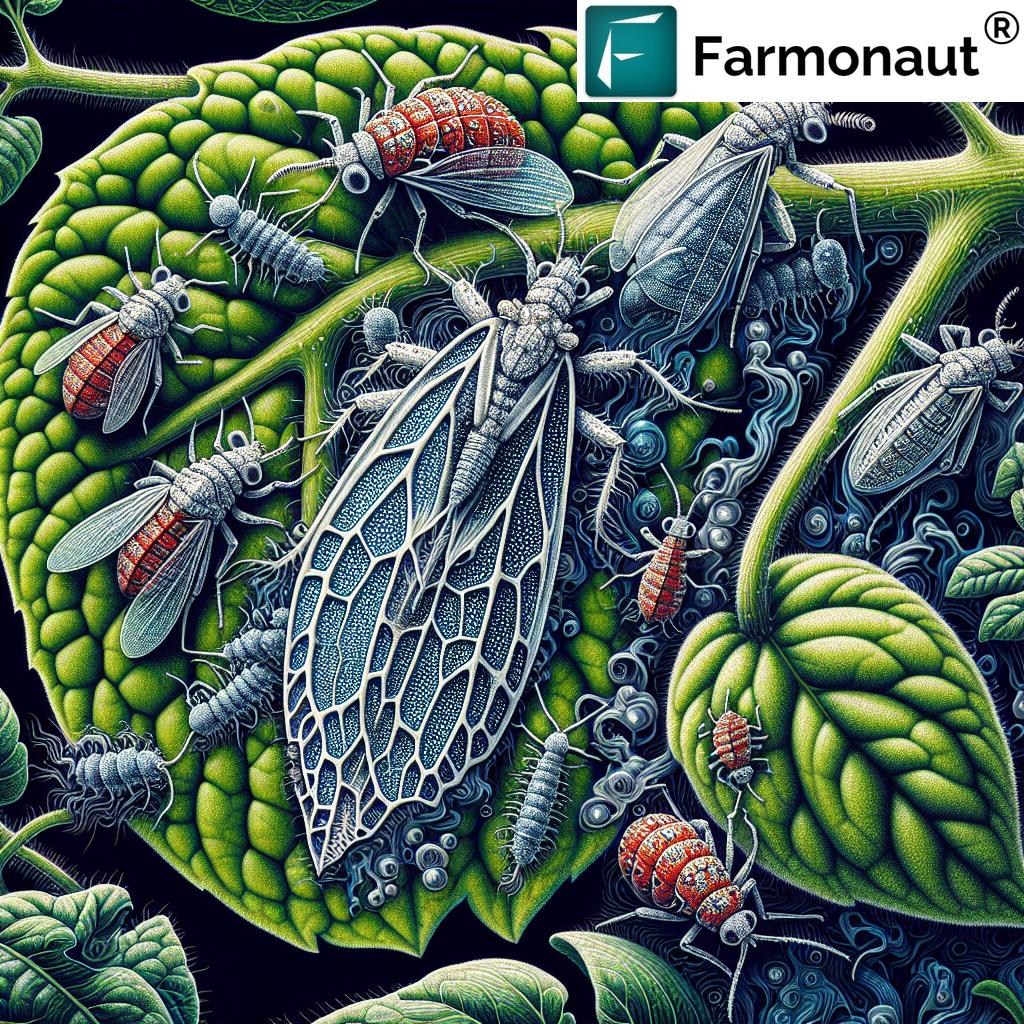Revolutionize Your Dairy Farm: Boost Milk Production with Automated Feed Systems and Smart Nutrition Strategies
“Automated feed-pushing robots can increase dry matter intake by up to 3.5% in dairy cows, boosting milk production.”
In the ever-evolving world of dairy farm management, staying ahead of the curve is crucial for success. As we delve into the realm of automated feed systems and smart nutrition strategies, we’re excited to explore how these innovations can revolutionize your dairy operation and significantly boost milk production. Our journey through cutting-edge technologies and nutritional science will provide you with the tools to optimize your herd’s productivity while maintaining cow comfort and health.
At Farmonaut, we understand the challenges faced by dairy farmers in today’s competitive market. While we specialize in satellite-based crop monitoring and farm management solutions, we recognize the importance of comprehensive agricultural knowledge. That’s why we’re here to share insights on dairy farm optimization, even though it’s not our primary focus.
Let’s dive into the world of automated feed systems, precision nutrition, and innovative dairy farm technologies that are reshaping the industry.
The Power of Automated Feed Systems in Dairy Farming
Automated feed systems have emerged as game-changers in modern dairy farm management. These innovative solutions ensure consistent feed availability, enhance dry matter intake, and promote optimal rumen health in dairy cows. Let’s explore some of the key benefits and technologies driving this revolution:
- Feed-Pushing Robots: These tireless assistants work around the clock to keep feed accessible to cows, encouraging more frequent meals and increased dry matter intake.
- Automated Feed Mixers: Precise blending of rations ensures each cow receives the perfect nutritional balance, tailored to her specific needs and production stage.
- Smart Feed Dispensers: These systems can adjust feed allocation based on individual cow data, optimizing nutrition for each animal in the herd.
Implementing these technologies can lead to significant improvements in feed efficiency, milk production, and overall herd health. Let’s take a closer look at how these systems compare:
| Feed System Type | Average Increase in Milk Production (%) | Improvement in Feed Efficiency (%) | Estimated Labor Savings (hours/week) | Initial Investment Cost Range ($) | Payback Period (months) | Key Benefits |
|---|---|---|---|---|---|---|
| Feed-pushing robots | 3-5% | 5-8% | 10-15 | 15,000-30,000 | 12-18 | Consistent feed availability, Reduced feed waste |
| Automated feed mixers | 4-7% | 7-10% | 15-20 | 50,000-100,000 | 18-24 | Precise ration blending, Improved nutrient utilization |
| Smart feed dispensers | 5-8% | 8-12% | 20-25 | 75,000-150,000 | 24-36 | Individualized feeding, Real-time feed adjustment |
| Integrated feeding systems | 7-10% | 10-15% | 25-30 | 100,000-200,000 | 36-48 | Comprehensive feed management, Data-driven decision making |
As we can see, the initial investment in automated feed systems can be substantial, but the potential returns in terms of increased milk production, improved feed efficiency, and labor savings make them attractive options for forward-thinking dairy farmers.
Smart Nutrition Strategies for Maximizing Milk Production
While automated systems play a crucial role in optimizing feed delivery, the nutritional content of the feed itself is equally important. Let’s explore some smart nutrition strategies that can help boost milk production and maintain herd health:
- Balancing Moisture Content: Achieving the right moisture level in feed rations is critical for palatability and nutrient absorption.
- High-Quality Forages: Investing in premium forages forms the foundation of a healthy dairy cow diet.
- Strategic Use of Concentrates: Balancing forages with the right concentrates can optimize energy and protein intake.
- Dietary Additives: Supplements like probiotics and essential fatty acids can enhance rumen function and overall cow health.
“Optimizing feed moisture content to 50-55% can improve feed efficiency by 5-10% in dairy cattle.”
Implementing these strategies requires careful planning and monitoring. This is where precision agriculture tools, like those offered by Farmonaut, can be invaluable. While our primary focus is on crop monitoring, the principles of data-driven decision-making apply equally to livestock management.
For those interested in exploring how satellite technology can enhance farm management, we invite you to check out our services:
Now, let’s delve deeper into each of these nutritional strategies:
Balancing Moisture Content in Feed Rations
Achieving the optimal moisture content in dairy cow feed is a delicate balance. Too dry, and the feed becomes unpalatable; too wet, and it can lead to fermentation issues and reduced dry matter intake. Here are some key points to consider:
- Aim for a total mixed ration (TMR) moisture content between 50-55%
- Use moisture testing equipment to regularly monitor feed consistency
- Adjust water addition based on seasonal changes and forage moisture levels
- Consider using water-absorbing products in dry climates to maintain optimal moisture
By maintaining the right moisture balance, we can significantly improve feed intake and digestibility, leading to increased milk production.
Investing in High-Quality Forages
The foundation of any successful dairy nutrition program is high-quality forage. Here’s why it matters and how to ensure you’re providing the best:
- Focus on timely harvesting to maximize nutrient content
- Implement proper storage techniques to preserve forage quality
- Consider using inoculants to improve fermentation and nutrient retention
- Regularly test forage quality to adjust rations accordingly
At Farmonaut, while we don’t directly deal with forage production, our satellite-based crop monitoring tools can help farmers optimize their forage crop yields. Learn more about our crop monitoring services:
Strategic Use of Concentrates
Balancing forages with the right concentrates is crucial for meeting the energy and protein requirements of high-producing dairy cows. Consider these strategies:
- Tailor concentrate composition based on forage quality and cow production stage
- Implement step-up feeding programs for fresh cows to prevent metabolic disorders
- Use bypass proteins to enhance amino acid availability
- Monitor milk urea nitrogen (MUN) levels to assess protein utilization efficiency
By fine-tuning your concentrate strategy, you can optimize milk production while maintaining cow health and reproductive performance.
Leveraging Dietary Additives
Dietary additives can play a significant role in enhancing rumen function, improving feed efficiency, and boosting overall cow health. Some key additives to consider include:
- Probiotics to promote beneficial rumen microflora
- Essential fatty acids for improved energy balance and reproductive health
- Rumen-protected amino acids to optimize protein utilization
- Yeast cultures to enhance fiber digestion and stabilize rumen pH
While these additives can be powerful tools, it’s essential to work closely with a nutritionist to determine the most effective combination for your herd.
Leveraging Technology for Precision Dairy Farming
In addition to automated feed systems and smart nutrition strategies, a wide array of technologies are transforming dairy farm management. Let’s explore some of these innovations:
- Automated Milking Systems: Robotic milkers that allow cows to be milked on their own schedule, reducing labor and increasing milking frequency.
- Precision Feed Monitoring: Systems that track individual cow feed intake and adjust rations in real-time.
- Wearable Technology: Sensors that monitor cow activity, rumination, and health parameters to detect issues early.
- Data Analytics Platforms: Software that integrates data from various farm systems to provide actionable insights.
While Farmonaut’s expertise lies in crop monitoring, the principles of data-driven decision-making apply equally to livestock management. Our satellite-based solutions can help dairy farmers optimize their feed crop production, contributing to overall farm efficiency.
To learn more about how our technology can benefit your farm operations, check out our iOS app:
Implementing Efficient Feeding Schedules
Optimizing feeding schedules is crucial for maximizing dry matter intake and milk production. Here are some key strategies to consider:
- Provide fresh feed multiple times throughout the day to stimulate appetite
- Align feeding times with milking schedules to encourage feed intake
- Implement feed pushing routines to ensure constant feed availability
- Monitor feed bunk occupancy to adjust feeding frequency as needed
By fine-tuning your feeding schedule, you can encourage more consistent feed intake, leading to improved rumen health and milk production.
Proper Feed Bunk Management
Effective feed bunk management is essential for optimizing feed efficiency and maintaining herd health. Consider these best practices:
- Ensure adequate bunk space per cow to reduce competition
- Maintain a clean and comfortable feeding area
- Monitor feed refusals and adjust quantities to minimize waste
- Implement feed barrier designs that promote natural feeding behavior
Proper feed bunk management not only improves feed efficiency but also contributes to overall cow comfort and herd dynamics.
Monitoring and Adjusting for Optimal Results
Continuous monitoring and adjustment are key to achieving and maintaining optimal milk production. Here are some essential metrics to track:
- Daily milk yield per cow
- Feed intake and efficiency
- Body condition scores
- Rumen fill and manure consistency
- Milk components (fat, protein, and solids)
Regular analysis of these metrics allows for timely adjustments to feeding strategies and overall farm management.
While Farmonaut’s primary focus is on crop monitoring, the importance of data-driven decision-making applies across all aspects of farm management. For those interested in exploring how our technology can enhance overall farm operations, we invite you to check out our API services:
For developers looking to integrate our satellite and weather data into their own systems, we offer comprehensive documentation:
Sustainability and Environmental Considerations
As we strive to optimize dairy farm productivity, it’s crucial to consider the environmental impact of our practices. Here are some ways to enhance sustainability in dairy operations:
- Implement precision feeding to reduce nutrient waste
- Explore methane reduction strategies, such as feed additives or biogas production
- Optimize water usage through efficient cleaning and cooling systems
- Consider renewable energy sources for farm operations
By focusing on sustainability, we not only reduce our environmental footprint but also often improve farm efficiency and profitability.
The Future of Dairy Farm Management
As we look to the future, the integration of advanced technologies and data-driven decision-making will continue to shape the dairy industry. Some emerging trends to watch include:
- Artificial Intelligence for predictive health and production modeling
- Blockchain technology for supply chain transparency
- Advanced genomics for breeding more efficient and resilient cows
- Precision livestock farming techniques for individualized animal care
While these technologies may seem futuristic, many are already being implemented on progressive dairy farms around the world.
Conclusion: Embracing Innovation for Dairy Farm Success
Revolutionizing your dairy farm through automated feed systems and smart nutrition strategies is a journey of continuous improvement and adaptation. By embracing these technologies and practices, you can significantly boost milk production, improve herd health, and increase overall farm profitability.
Remember, the key to success lies in:
- Implementing automated feed systems tailored to your farm’s needs
- Optimizing nutrition strategies based on scientific principles and herd data
- Leveraging technology for precision management and decision-making
- Continuously monitoring and adjusting practices for optimal results
- Prioritizing sustainability alongside productivity
While Farmonaut’s expertise lies in satellite-based crop monitoring and farm management solutions, we recognize the interconnected nature of modern agriculture. The data-driven approach we advocate for crop management can be equally valuable in optimizing dairy operations.
We encourage you to explore how our technologies can complement your dairy farm management strategies, particularly in optimizing feed crop production and overall farm efficiency.
FAQ Section
Q: How do automated feed systems improve milk production?
A: Automated feed systems ensure consistent feed availability, encourage more frequent meals, and optimize feed mixing and distribution. This leads to increased dry matter intake, improved rumen health, and ultimately higher milk production.
Q: What is the optimal moisture content for dairy cow feed?
A: The ideal moisture content for a total mixed ration (TMR) is typically between 50-55%. This balance promotes palatability and optimal nutrient absorption.
Q: How often should dairy cows be fed?
A: While practices vary, providing fresh feed multiple times throughout the day (typically 3-4 times) can stimulate appetite and increase overall feed intake.
Q: What role do dietary additives play in dairy cow nutrition?
A: Dietary additives such as probiotics, essential fatty acids, and rumen-protected amino acids can enhance rumen function, improve feed efficiency, and support overall cow health and productivity.
Q: How can technology help in managing a dairy farm?
A: Technology such as automated milking systems, precision feed monitoring, wearable sensors, and data analytics platforms can optimize various aspects of dairy farm management, from individual cow care to overall herd productivity.
By implementing these innovative strategies and technologies, you’re well on your way to revolutionizing your dairy farm and achieving new heights in milk production and efficiency. Remember, success in modern dairy farming is about combining time-tested practices with cutting-edge innovations to create a sustainable and productive operation.

